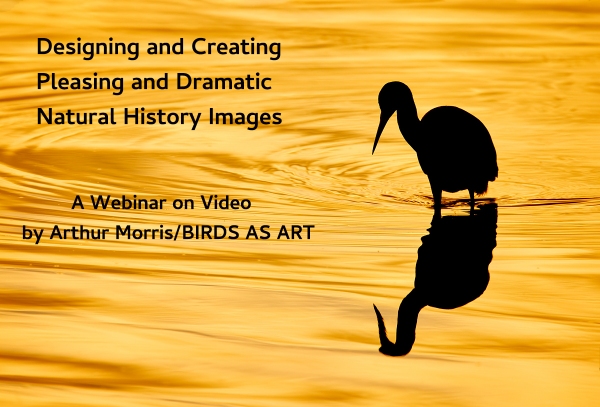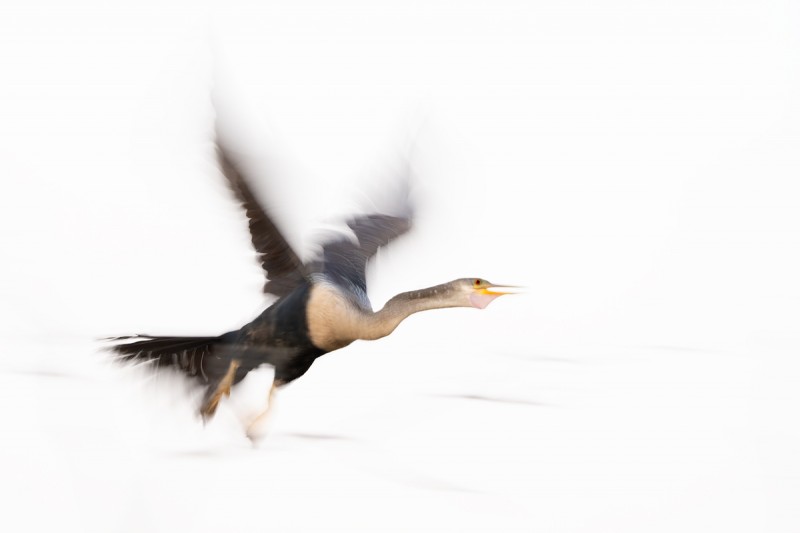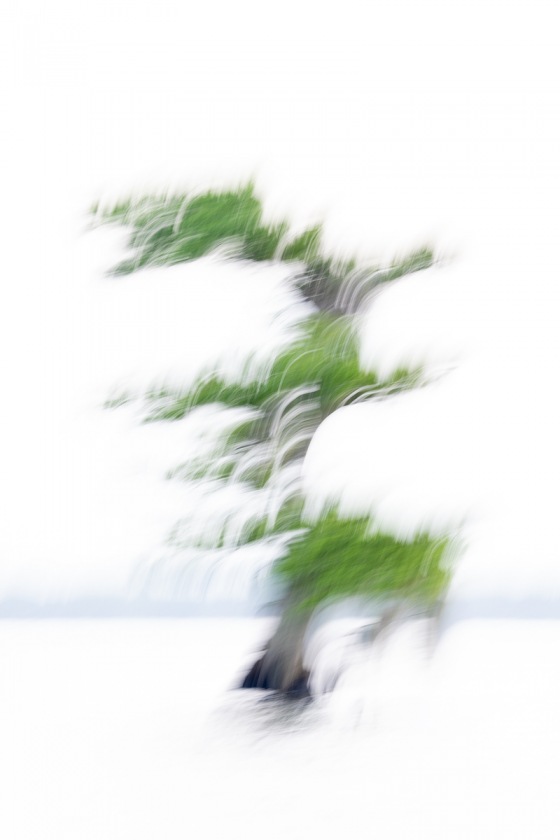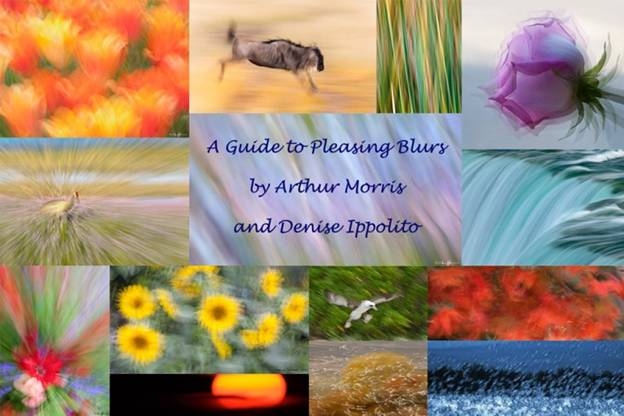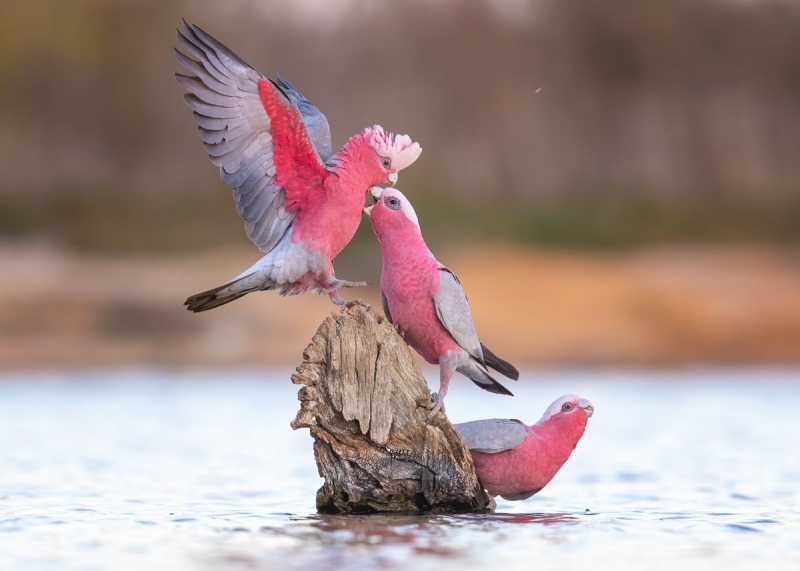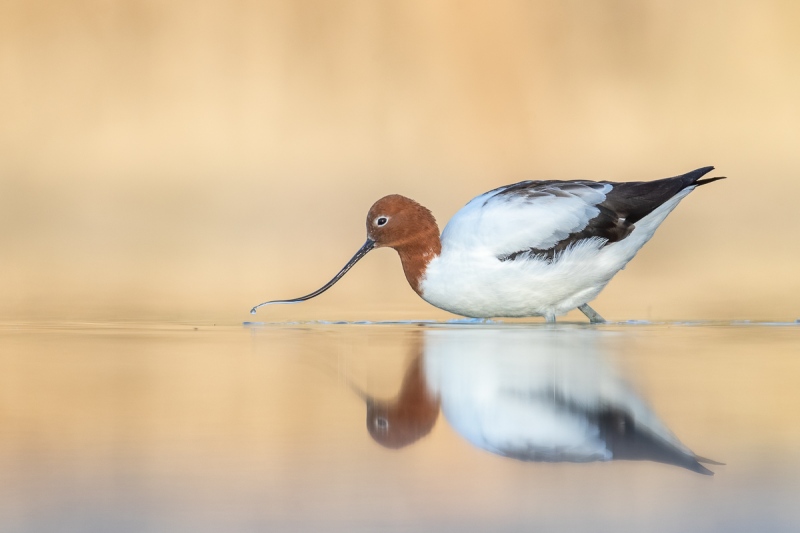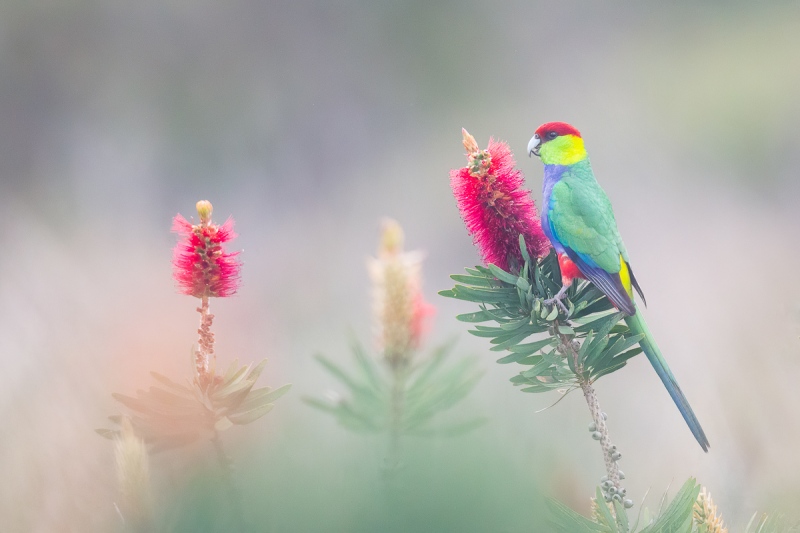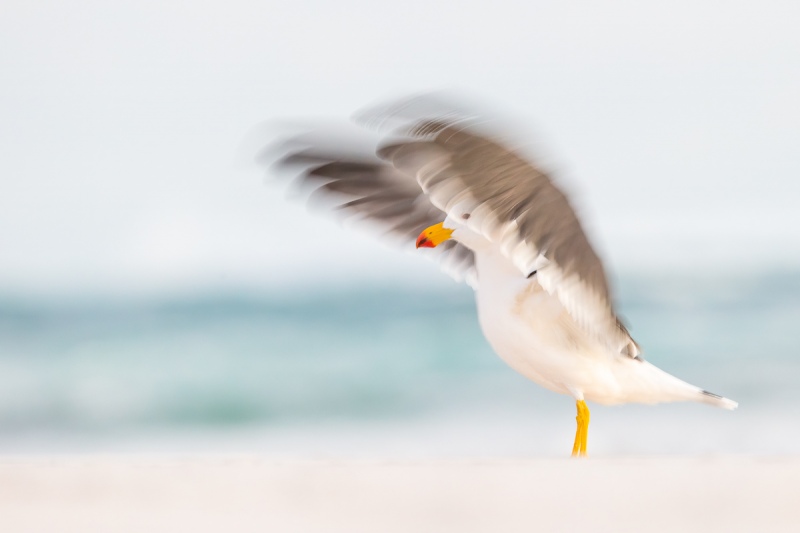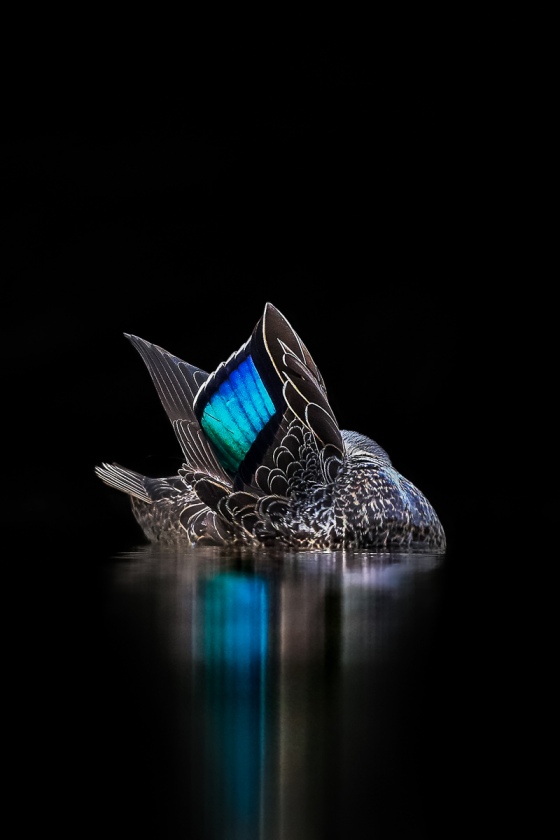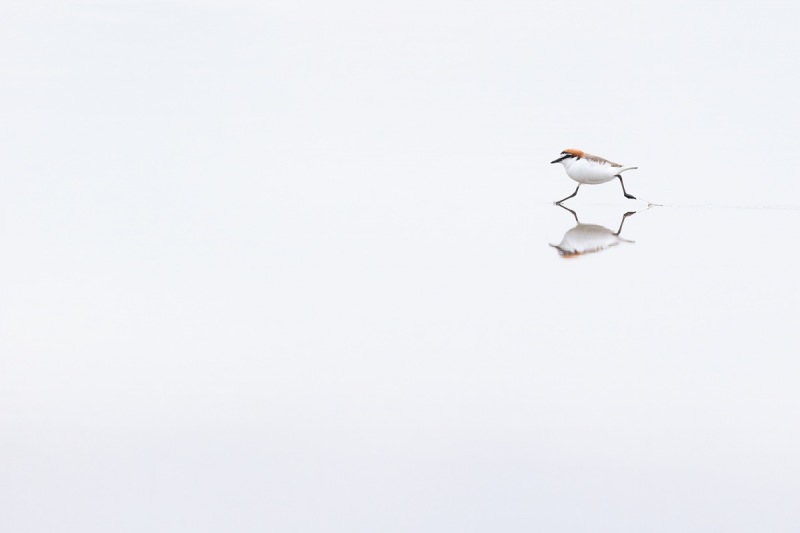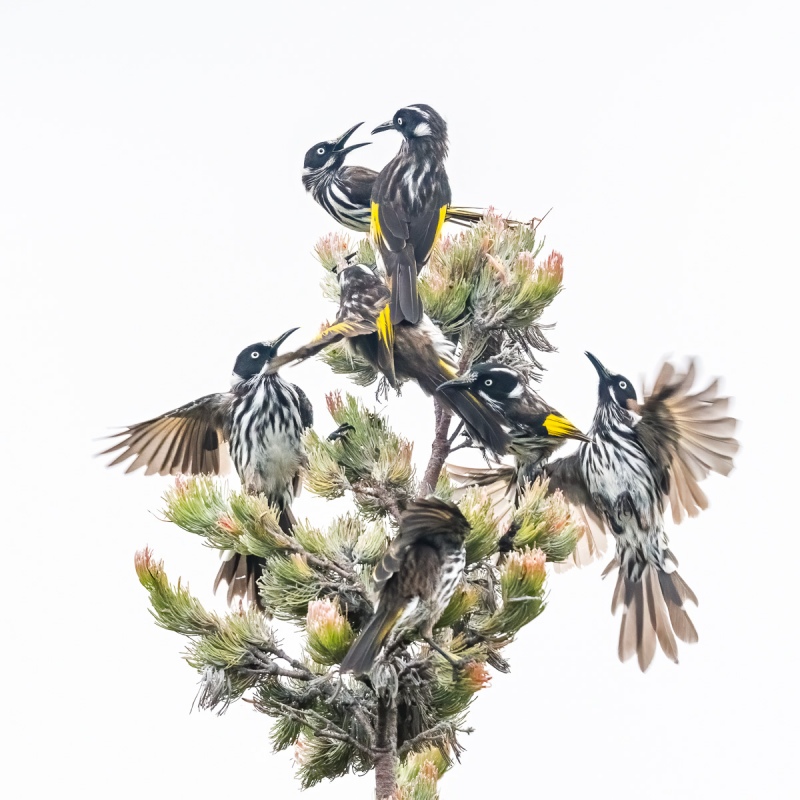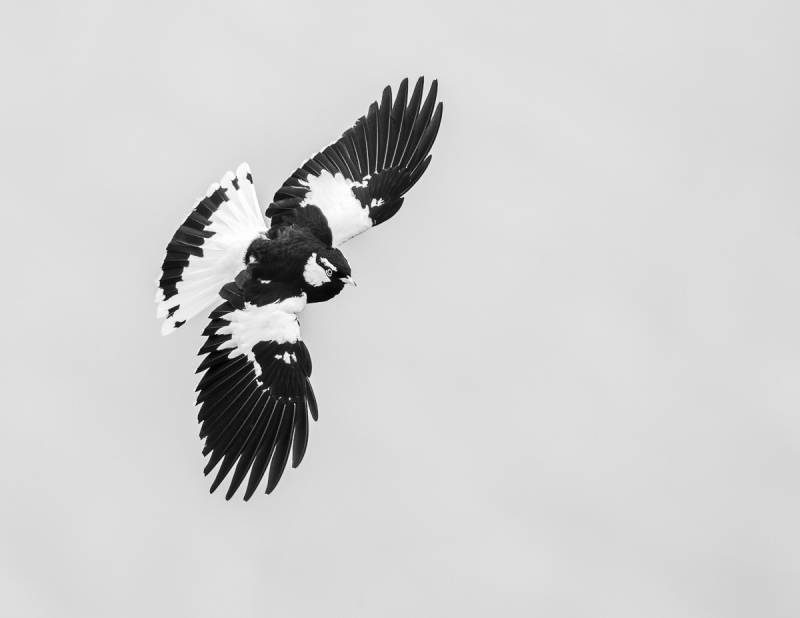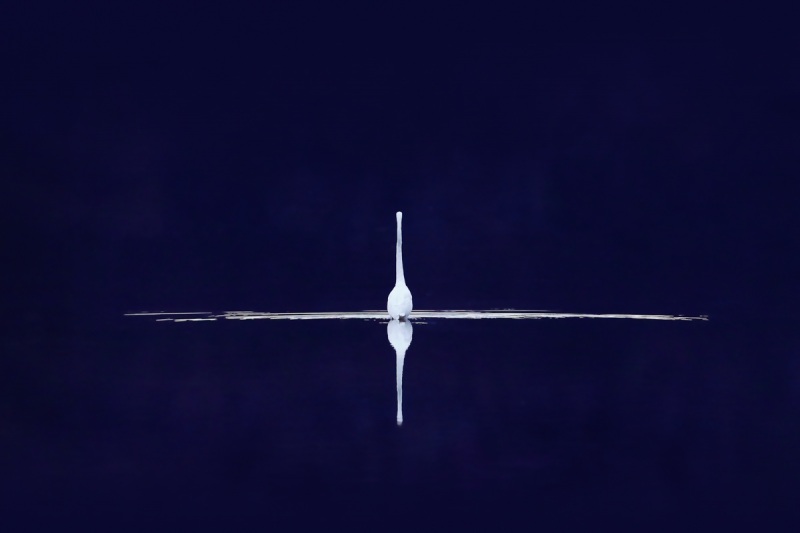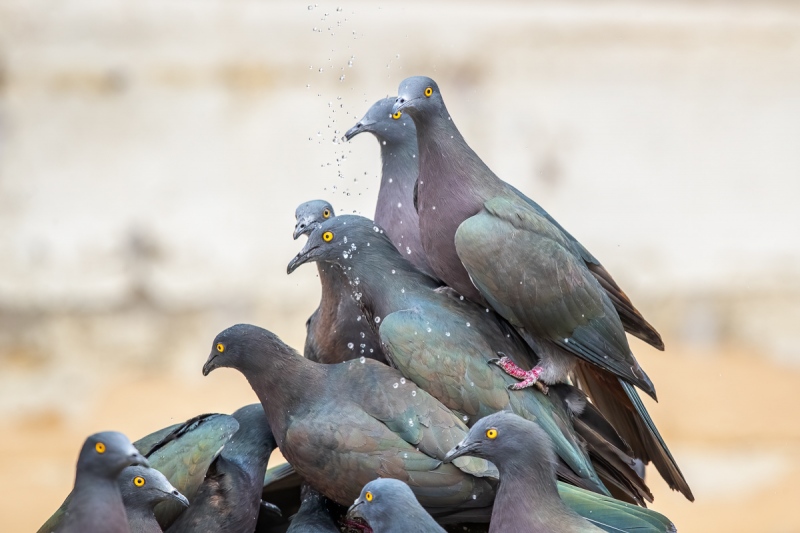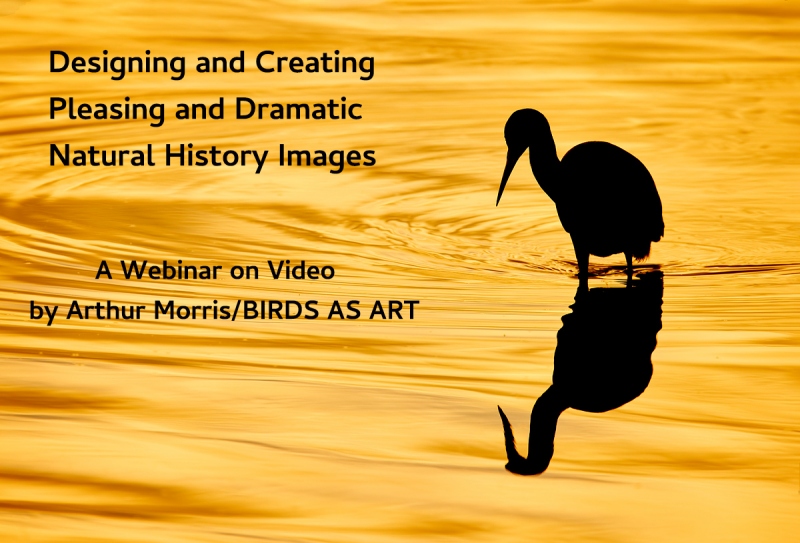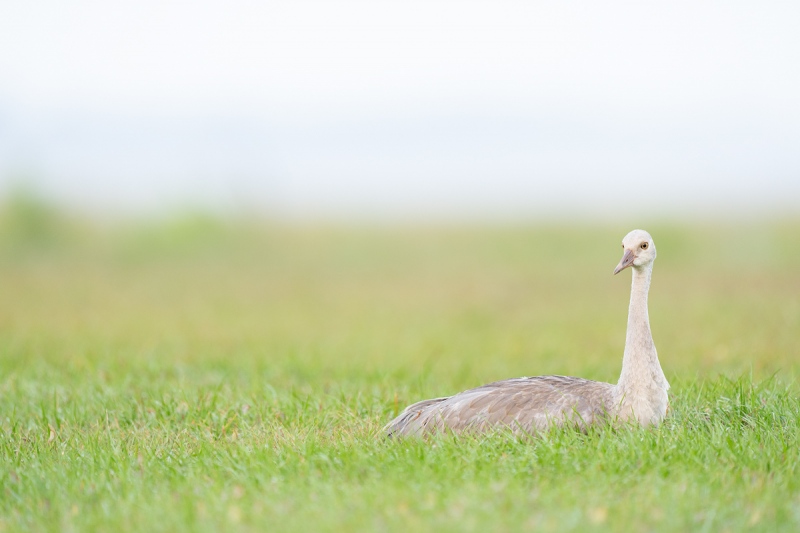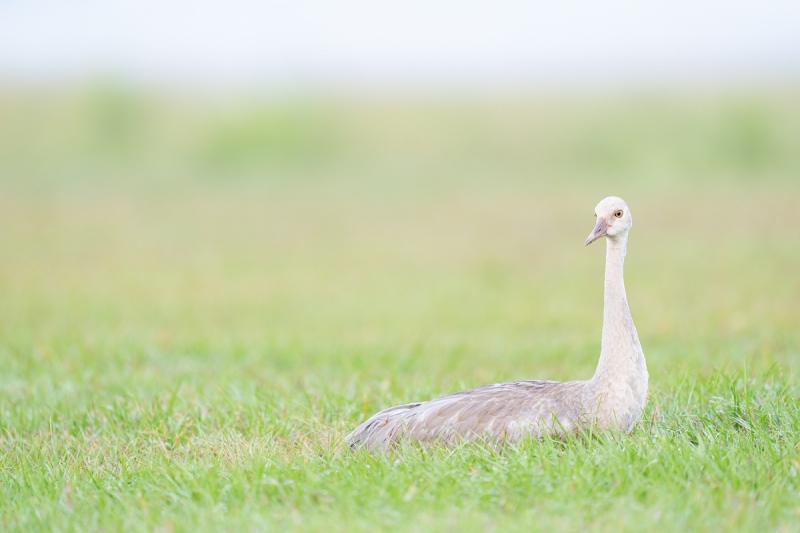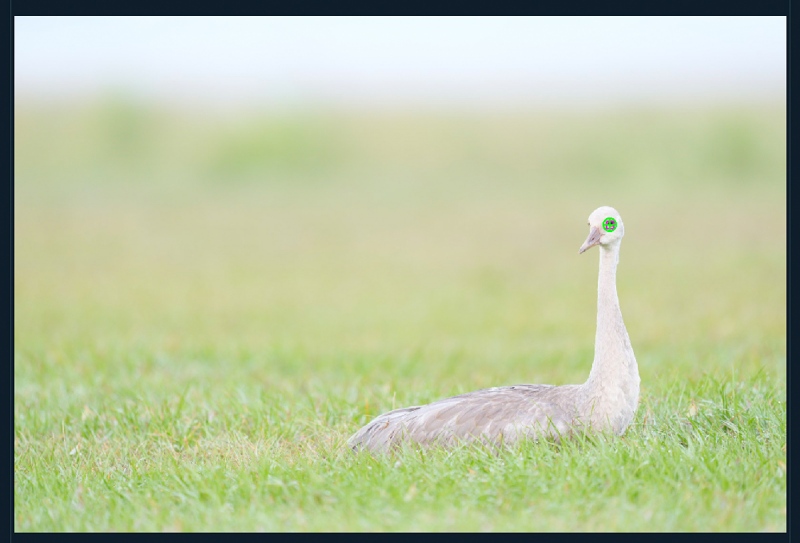May 9th, 2021 What’s Up?
It has probably well more than a decade since I had been to Wakodahatchee Wetlands in Delray. Heck, probably two decades. I began with digital in 2001, and do not think that I have a single digital image from Wako … During my absence, the Wood Storks have taken over the joint. In force. There are dozens and dozens of nests with chicks ranging from just-hatched tiny ones to almost-fledged. The species is doing quite well. Some of the nests are within 20 feet of the boardwalk. Shooting at rookeries is, however, always a big challenge and that was the case during our morning visit. Rookeries are always super-cluttered, many nests are quite close together, and light angle is often a problem. None-the-less, I think that I got a few good ones.
Today is Sunday 9 May 2021. The forecast for ILE for this morning is for sunny with an east southeast wind. I will surely be heading down to the lake early. Wherever you are, and whatever you are doing, I hope that you have a great day.
This blog post took about an hour to prepare, and makes 136 straight days with a new one. Please remember that if an item — a Delkin flash card, or a tripod head, for example, that is available from B&H and/or Bedfords and is also available in the BAA Online Store, it would be great if you opt to purchase from us. We will match any price. Please remember also to use my B&H affiliate links or to save 3% at Bedfords by using the BIRDSASART discount code at checkout. Doing either often earns you free guides and/or discounts. And always earns my great appreciation.
If the two images in today’s post tickle your fancy, note that there is an educational 14-frame section on creating pleasing blurs in the video webinar, Designing and Creating Pleasing and Dramatic Natural History Images.
|
|
Designing and Creating Pleasing and Dramatic Natural History Images
A Video Webinar: $30 by electronic download
Order your copy by clicking here.
|
Designing and Creating Pleasing and Dramatic Natural History Images
A Video Webinar
In this 1 hour 28 minute plus video you will learn and be inspired. We cover everything from the very basics to the fine points. After a brief bio, the topics include Behavior, Action, Diagonal Lines, and the Cuteness Factor; Birds in Flight — The Holy Grail of Bird Photography; Mis-Framing!; Basic Image Design/HORIZONTALS: Get the subject out of the center of the frame. Basic Image Design/VERTICALS: The center of the frame is generally fine; The Importance of BACKGROUND; Isolating the Subject; Other Elements of Composition; On Getting Low; Going Wide for Bird-scapes; Super-tight!; Working in Sunny Conditions; Working in Cloudy Conditions; Working in Foggy Conditions; Working in the Shade; Working in Bad Weather; Creating Back-lit Images; Creating Silhouettes; and Creating Pleasing Blurs.
Each segment of the program consists of an average of about 15 images that will drive home the points being made, educate you, and inspire. The instructions and advice, given clearly and concisely, are based on my near-38 years of experience photographing birds with telephoto and super-telephoto lenses. And on several decades of creating educational blog posts.
This presentation is based on the webinar that I did for the South Shore Camera Club in April. You can find some of the comments below along with comments from two of the folks who viewed the webinar the night before the DeSoto IPT began.
You can order your copy of Designing and Creating Pleasing and Dramatic Natural History Images/A Video Webinar by clicking here or by calling Jim with your credit card in hand at 863-692-0906.
Please Remember
With income from IPTs greatly reduced, please, if you enjoy and learn from the blog, remember to use one of my two affiliate programs when purchasing new gear. Doing so just might make it possible for me to avoid having to try to get a job as a Walmart greeter and will not cost you a single penny more. And if you use Bedfords and remember to enter the BIRDSASART code at checkout, you will save 3% on every order and enjoy free second-day air shipping. In these crazy times — I am out at least forty to sixty thousand dollars so far due to COVID 19 (with lots more to come) — remembering to use my B&H link or to shop at Bedfords will help me out a ton and be greatly appreciated. Overseas folks who cannot order from the US because of import fees, duties, and taxes, are invited to help out by clicking here to leave a blog thank you gift if they see fit.
New and Better Bedfords Discount Policy!
You can now save 3% on all of your Bedfords photo gear purchases by entering the BIRDSASART coupon code at checkout. Your discount will be applied to your pre-tax total. In addition, by using the code you will get 2nd day air shipping via Fed Ex.
Grab a Nikon AF-S Teleconverter TC-14E III and save $14.99. Purchase a Canon EOS R5 and your discount will be $116.97. Purchase a Sony FE 600mm f/4 GM OSS lens and save a remarkable $389.94! Your Bedford’s purchase no longer needs to be greater than $1,000.00 for you to receive a discount. The more you spend, the more you save.
Money Saving Reminder
Many have learned that if you need a hot photo item that is out of stock at B&H and would enjoy free second-day air shipping, your best bet is to click here, place an order with Bedfords, and enter the coupon code BIRDSASART at checkout. If an item is out of stock, contact Steve Elkins via e-mail or on his cell phone at (479) 381-2592 (Central time). Be sure to mention the BIRDSASART coupon code and use it for your online order to save 3% and enjoy free 2nd-day air shipping. Steve has been great at getting folks the hot items that are out of stock at B&H and everywhere else. The wait lists at the big stores can be a year or longer for the hard to get items. Steve will surely get you your gear long before that. For the past year, he has been helping BAA Blog folks get their hands on items like the SONY a9 ii, the SONY 200-600 G OSS lens, the Canon EOS R5, the Canon RF 100-500mm lens, and the Nikon 500mm PF. Steve is personable, helpful, and eager to please.


Gear Questions and Advice
Too many folks attending BAA IPTs (remember those?) and dozens of photographers whom I see in the field and on BPN, are–out of ignorance–using the wrong gear especially when it comes to tripods and more especially, tripod heads… Please know that I am always glad to answer your gear questions via e-mail
|
|
|
This image was created on 23 April 2021 on Lake Kissimmee aboard Clemens Van der Werf’s flats boat. I used the hand held Sony FE 200-600mm f/5.6-6.3 G OSS lens (at 376mm) and The One, the Sony Alpha 1 Mirrorless digital camera. AUTO set ISO 800. Exposure determined by Zebras with EC on the Thumb Dial. Multi metering +2.7 stops: 1/30 sec. at f/6.3 (wide open) in Shutter Priority mode. AWB at 6:49am on a very overcast morning.
Wide/AF-C was active at the moment of exposure and performed perfectly. Click on the image to see a larger version.
Image #1: Anhinga taking flight
|
Why (Pleasing) Blurs?
You are out early. It is overcast. There is little light to work with. Even with Topaz DeNoise and cameras that have fabulous sensors that handle high ISOs better than ever, nobody wants to be working at ISOs in the range of 6400 to 12800 or even higher in order to get a shutter speed high enough to create sharp image. IMHO, the best way to go in such situations is to get creative and work with low shutter speeds (and correspondingly lower ISO). Creating a good pleasing blur is like winning the lottery — you’ve got to buy lots of tickets (i.e., makes lots of images), and throw in a bit of luck …
Note: the bird’s eye is the original eye after some Eye Doctor work; I brightened the pupil and increased the Vibrance. All as detailed along with dozens of great workflow and Photoshop tips and techniques in Digital Basics II.
|
|
|
This image was created on 4 May 2021 on Lake Blue Cypress aboard Clemens Van der Werf’s flats boat. I used the hand held Sony FE 200-600mm f/5.6-6.3 G OSS lens (at 200mm) and The One, the Sony Alpha 1 Mirrorless digital camera. ISO 250. Exposure determined by Zebras and experience with ISO on the Thumb Dial: 1/5 sec. at f/5.6 (wide open) in Manual mode. AWB at 6:49am on a very overcast morning.
Wide/AF-C was active at the moment of exposure and performed perfectly. Click on the image to see a larger version.
Image #2: Cypress Tree jiggle blur
|
Jiggle Blurs
The trees on Lake Blue Cypress are gorgeous and I have photographed them often in lots of different lighting conditions. Aside from perhaps a silhouette or two, I have never created anything memorable. At least until the morning of 4 May. Or not, depending on your taste. I went down to 1/5 second, adjusted the ISO to show 3 stops off the white (actually dreary grey) sky, and began creating vertical pan/jiggle blurs. Working rapidly, I created about 50 images checking ever few to see how I was doing. Some of the images showed hope, but most were mis-framed too high or too low. So I kept trying. I did not see this one in the field but when I saw it on the computer I was impressed. After setting the black point and adding some Vibrance it literally jumped off the screen. At least for me.
Note: Denise Ippolito came up with the term “jiggle blur” and taught me the technique. Here I combined that with a vertical pan blur.
Why Manual?
For well more than a decade –heck, probably for more than two decades, I have been teaching folks to create pleasing blurs in low light in Shutter Priority mode using Auto ISO with Exposure Compensation (EC) on this or that dial or wheel. That approach works very well during the pre-dawn at the beach where pretty much everything — the sand, the sky, and even the water, is relatively light-toned. The single negative to this approach is that if the birds fly in front of a dark background — mangroves, for example, the subject will be grossly over-exposed as you will generally be between +2 or +3 EC. So I have recently begun going back to basics when shooting blurs: work in Manual mode, set the shutter speed and aperture, and then adjust the ISO (again on this or that dial or wheel) as needed to get the right exposure on the subject. Just as I did for Image #2.
Multiple Choice Quiz
A- I hate blurs. I would delete both of today’s featured images.
B- I like both equally.
C- I like both but Image #1 is stronger.
D- I like both but Image #2 is stronger.
E- Fill in the blank if you wish.
A Guide to Pleasing Blurs
Learn everything there is to know about creating pleasingly blurred images in A Guide to Pleasing Blurs by Denise Ippolito and yours truly. This 20,585 word, 271 page PDF is illustrated with 144 different, exciting, and artistic images. The guide covers the basics of creating pleasingly blurred images, the factors that influence the degree of blurring, the use of filters in creating pleasing blurs, and a great variety of both in-the-field and Photoshop techniques that can be used to create pleasingly blurred images.
Artie and Denise teach you many different ways to move your lens during the exposure to create a variety of pleasingly blurred images of flowers and trees and water and landscapes. They will teach you to recognize situations where subject movement can be used to your advantage to create pan blurs, wind blurs, and moving water blurs. They will teach you to create zoom-blurs both in the field and during post-processing. Artie shares the techniques that he has used and developed for making blurred images of flocks of geese in flight at his beloved Bosque del Apache and Denise shares her flower blur magic as well as a variety of creative Photoshop techniques that she has developed.
With the advent of digital capture creating blurred images has become a great and inexpensive way to go out with your camera and have fun. And while many folks think that making successful blurred images is the result of being a sloppy photographer, nothing could be further from the truth. In “A Guide to Pleasing Blurs” Artie and Denise will help you to unleash your creative self.
Typos
With all blog posts, feel free to e-mail or to leave a comment regarding any typos or errors.
May 8th, 2021 A Very Difficult Chore
All are invited to leave a comment listing no more than three of their favorite images created by the quite amazing Georgina Steytler. Be sure to let us know why you made your choice or choices. I will share my three favorites here in a day or three.
Remember that looking at (and evaluating) great imagery is one of the very best ways to improve your own photography …
What’s Up?
After two days off, I made it down to the lake on Friday morning. The two growing-more-every-day crane chicks foraged cooperatively in stands of yellow tickseed before the sun came over the one very tall cloud on the eastern horizon. I spent a lot of time doing critiques in the Avian Forum on BPN where the work of the boys and girls keeps getting better and better. I will be featuring some of those images here soon.
Today is Saturday 8 May 2021. It is 4am and Anita North and I are in the car and headed down to Wakodahatchee Wetlands in Delray, FL. The forecast is perfect: clear skies with a wind from the east. Wherever you are, and whatever you are doing, I hope that you have a great day.
This blog post took about eight months and 1 1/2 hours to prepare, and makes 135 consecutive days with a new one. Please remember that if an item — a Delkin flash card, or a tripod head, for example, that is available from B&H and/or Bedfords and is also available in the BAA Online Store, it would be great if you opt to purchase from us. We will match any price. Please remember also to use my B&H affiliate links or to save 3% at Bedfords by using the BIRDSASART discount code at checkout. Doing either often earns you free guides and/or discounts. And always earns my great appreciation.
|
|
Image #1: Three Galahs. Image courtesy of and copyright 2018: Georgina Steytler
|
Learning About Georgina
BPN-friend, retired Arena Football League star Brian Sump alerted me to Georgina’s fine work with this e-mail on 9/8/20:
She won the portfolio award for BPOTY in the last contest. She is extremely creative. I love her work. You can see some of her work here.
Note: If you are half as impressed with Georgina’s images as I am, you can learn a ton and smile a lot by checking out her galleries. And to learn a ton about Georgina the person, read this very honest and interesting interview article entitled “The Life and Laughs of Georgina Steytler” by Wayne Harrington here. It details her life-saving transition from corporate lawyer to photographer/conservationist.
|
|
Image #2: Red-necked Avocet. Image courtesy of and copyright 2018: Georgina Steytler
|
Making Contact
On 14 Sep 2020 I e-mailed Georgina as below.
Hi Georgina, Hope that you are well and safe. My friend Brian Sump from BirdPhotographer’s.Net sent me a link to your site. You work is fabulous. Congrats on the recent portfolio honors. I have looked at your galleries several times and shared them with friends. I am not sure whether to call you the “Queen of High Key” or the Queen of Light.” I think that your high key stuff is amazing. I would love to feature some of your images in a blog post if that works for you.
with love, artie
|
|
Image #3: Red-capped Parrot on Bottlebrush. Image courtesy of and copyright 2018: Georgina Steytler
|
Georgina Replies
Hi Artie!
OMG yes! I would absolutely be honoured to be featured in your blog. I think I have all of your books! I am a bit embarrassed as I haven’t updated my website for a while. Please let me know what you would like from me. I am very excited!
Hugs, Georgina
ps: sorry for short reply but on the move in outback Australia! Hoping to photograph budgies tomorrow 🙂
|
|
Image #4: Pacific-Gull flapping. Image courtesy of and copyright 2018: Georgina Steytler
|
The Request
On 9/16/20 I wrote back:
I grabbed some screen caps from your website. It would be great if you could send me sharpened 1200 pixels on the long side jpegs for each of the images below (less than 395KBs) and a few more if you like.
|
|
Image #5: Pacific Black Duck preening. Image courtesy of and copyright 2018: Georgina Steytler
|
Dropping the Ball …
Not sure why, but life got in the way and I never got around to publishing Georgina’s fine work. Until today. It was well worth the wait and you guys are the lucky ones.
|
|
Image #6: Red-capped Plover on the run. Image courtesy of and copyright 2018: Georgina Steytler
|
Why Lucky?
I love Georgina’s style, her creative vision, the simplicity of her images, and her use of soft, high key, and often dramatic light. Many of her images look like watercolors. Over the years, many have scoffed at me when I say that I prefer photographing in cloudy bright rather than sunny conditions. It looks as if not one a single one of the images that I chose for today’s post was created in full sun. Well done, young lady.
|
|
Image #7: New Holland Honeyeaters. Image courtesy of and copyright 2018: Georgina Steytler
|
About Georgina by Georgina
I am a nature photographer with a passion for birds, ethics and conservation. I grew up on an orchard in Donnybrook, a small country town in Western Australia, where I developed a love of nature.
My interest in photography became a passion over ten years ago when I quit my corporate job and began volunteer work with BirdLife WA. Since then, I have been working to produce images for use by conservation organisations across Australia (for free), as well as teaching the art and ethics of bird photography through workshops, talks and articles.
The highlight of my photographic career was in 2018 when I became the first Australian woman to win a category (Invertebrates: Behaviour) in the Wildlife Photographer of the Year, the world’s foremost nature photography competition. My other major achievements include Bird Photographer of the Year (Best Portfolio and Creative Prize), Grand Prix Winner of EAAFP Waterbirds Photo Contest, Australian Photography Awards (Wildlife) and Australian Geographic Nature Photographer of the Year (Portfolio Prize).
I currently live in Albany with my husband and a beautiful — if a little demanding, Belgian Shepherd.
|
|
Image #8: Magpie Lark banking in flight. Image courtesy of and copyright 2018: Georgina Steytler
|
Georgina’s Blog
Georgina does not post quite as often as I do (who does?), but you will find some very interesting stuff here along with a slew of great images.
|
|
Image #9: Great Egret abstract. Image courtesy of and copyright 2018: Georgina Steytler
|
Georgina’s Gear
Georgina used Canon gear — primarily a 600mm f/4 lens with a variety of bodies, for the majority of her bird photography. More recently, she has been playing around with some Olympus stuff, the E-M1 III and Olympus M.Zuiko Digital ED 300mm f/4 IS PRO Super Telephoto Lens (and the MC14 Teleconverter). And loving it.
|
|
Image #10: Christmas Island Pigeons. Image courtesy of and copyright 2018: Georgina Steytler
|
Facebook
Most folks use their FB pages to show off. Kudos to Georgina for using it as a teaching platform. You can visit (and learn) here.
Thanks, Georgina!
Thanks, Georgina for allowing me to share your work with the boys and girls here on the BAA Blog.
Typos
With all blog posts, feel free to e-mail or to leave a comment regarding any typos or errors.
May 7th, 2021 What’s Up?
On Thursday morning I stayed in to finish yesterday’s blog post while Anita went down to the lake. Again, she came back with some fine images. I ran some errands in town, had a great swim, and answered lots of e-mails. Thanks to the many who purchased the video webinar on day one.
Today is Friday 7 May 2021. The forecast is for clear with a gentle breeze from the north/northwest. We will probably head down to the lake early to see what’s up. Wherever you are, and whatever you are doing, I hope that you have a great day.
This blog post took less than an hour to prepare, and makes 134 consecutive days with a new one. Please remember that if an item — a Delkin flash card, or a tripod head, for example, that is available from B&H and/or Bedfords and is also available in the BAA Online Store, it would be great if you opt to purchase from us. We will match any price. Please remember also to use my B&H affiliate links or to save 3% at Bedfords by using the BIRDSASART discount code at checkout. Doing either often earns you free guides and/or discounts. And always earns my great appreciation.
Please Remember
With income from IPTs greatly reduced, please, if you enjoy and learn from the blog, remember to use one of my two affiliate programs when purchasing new gear. Doing so just might make it possible for me to avoid having to try to get a job as a Walmart greeter and will not cost you a single penny more. And if you use Bedfords and remember to enter the BIRDSASART code at checkout, you will save 3% on every order and enjoy free second-day air shipping. In these crazy times — I am out at least forty to sixty thousand dollars so far due to COVID 19 (with lots more to come) — remembering to use my B&H link or to shop at Bedfords will help me out a ton and be greatly appreciated. Overseas folks who cannot order from the US because of import fees, duties, and taxes, are invited to help out by clicking here to leave a blog thank you gift if they see fit.
New and Better Bedfords Discount Policy!
You can now save 3% on all of your Bedfords photo gear purchases by entering the BIRDSASART coupon code at checkout. Your discount will be applied to your pre-tax total. In addition, by using the code you will get 2nd day air shipping via Fed Ex.
Grab a Nikon AF-S Teleconverter TC-14E III and save $14.99. Purchase a Canon EOS R5 and your discount will be $116.97. Purchase a Sony FE 600mm f/4 GM OSS lens and save a remarkable $389.94! Your Bedford’s purchase no longer needs to be greater than $1,000.00 for you to receive a discount. The more you spend, the more you save.
Money Saving Reminder
Many have learned that if you need a hot photo item that is out of stock at B&H and would enjoy free second-day air shipping, your best bet is to click here, place an order with Bedfords, and enter the coupon code BIRDSASART at checkout. If an item is out of stock, contact Steve Elkins via e-mail or on his cell phone at (479) 381-2592 (Central time). Be sure to mention the BIRDSASART coupon code and use it for your online order to save 3% and enjoy free 2nd-day air shipping. Steve has been great at getting folks the hot items that are out of stock at B&H and everywhere else. The wait lists at the big stores can be a year or longer for the hard to get items. Steve will surely get you your gear long before that. For the past year, he has been helping BAA Blog folks get their hands on items like the SONY a9 ii, the SONY 200-600 G OSS lens, the Canon EOS R5, the Canon RF 100-500mm lens, and the Nikon 500mm PF. Steve is personable, helpful, and eager to please.


Gear Questions and Advice
Too many folks attending BAA IPTs (remember those?) and dozens of photographers whom I see in the field and on BPN, are–out of ignorance–using the wrong gear especially when it comes to tripods and more especially, tripod heads… Please know that I am always glad to answer your gear questions via e-mail
|
|
Designing and Creating Pleasing and Dramatic Natural History Images
A Video Webinar: $30 by electronic download
Order your copy by clicking here.
|
Designing and Creating Pleasing and Dramatic Natural History Images
A Video Webinar
In this 1 hour 28 minute plus video you will learn and be inspired. We cover everything from the very basics to the fine points. After a brief bio, the topics include Behavior, Action, Diagonal Lines, and the Cuteness Factor; Birds in Flight — The Holy Grail of Bird Photography; Mis-Framing!; Basic Image Design/HORIZONTALS: Get the subject out of the center of the frame. Basic Image Design/VERTICALS: The center of the frame is generally fine; The Importance of BACKGROUND; Isolating the Subject; Other Elements of Composition; On Getting Low; Going Wide for Bird-scapes; Super-tight!; Working in Sunny Conditions; Working in Cloudy Conditions; Working in Foggy Conditions; Working in the Shade; Working in Bad Weather; Creating Back-lit Images; Creating Silhouettes; and Creating Pleasing Blurs.
Each segment of the program consists of an average of about 15 images that will drive home the points being made, educate you, and inspire. The instructions and advice, given clearly and concisely, are based on my near-38 years of experience photographing birds with telephoto and super-telephoto lenses. And on several decades of creating educational blog posts.
This presentation is based on the webinar that I did for the South Shore Camera Club in April. Below are comments from two of the folks who viewed the webinar the night before the DeSoto IPT began.
You can order your copy of Designing and Creating Pleasing and Dramatic Natural History Images/A Video Webinar by clicking here or by calling Jim with your credit card in hand at 863-692-0906.
Anita North
Though I have been inspired by and learned from you for several years, doing the webinar the night before the IPT began was particularly noteworthy. I should watch it or create and study a cheat-sheet based on it before every shoot. In the video you cover all the bases: assessing the location, the weather, the light, the wind direction, and the sun angle. You talked about finding good opportunities, isolating the subject, composing the image, getting low or high, seeing the background, leaving an unproductive location trying somewhere else, and lots more. Photographing birds at the beach is a big challenge on all accounts and doing the session the night before was terrific and helpful. I was attentive and focused on what I needed to do. The webinar reminded me of the walk-around check-list that pilots are trained to do before they fly.
Donna Bourdon
Doing the webinar as the introductory program for the DeSoto IPT was a stroke of brilliance. When we headed out each of the next four days, I was inspired and felt completely prepared. Your instructional style is always easy to relate to, especially as you describe the attention to detail in each of the photographs that you shared in the webinar. You reminded us of the importance of getting low, of paying attention to the image design, particularly at the bottom of the frame, and to trust the focus tracking. These instructions improved my images a thousand-fold. I always avoided getting low because I don’t like sand all over me and my camera. But because of the inspiring images and your comments during the webinar, I decided to challenge myself. As is usual, you were right. What a difference it made to be at or near eye level with our subjects rather than be shooting down on a beautiful bird. I also started trusting the focus tracking on the Canon R5 and wasn’t disappointed; thanks again for helping me set it up correctly. It tracked perfectly and I was able to set up pleasing compositions in camera instead of during post-processing. Thank you Artie for always encouraging me to be my best.
|
|
|
This image was created on 1 May 2021 down by the lake at ILE. I used the Induro GIT 304L/Levered-clamp FlexShooter Pro-mounted Sony FE 600mm f/4 GM OSS lens and The One, the Sony Alpha 1 Mirrorless digital camera. ISO 1000. Exposure determined via Zebras with ISO on the rear dial: 1/200 sec. at f/4 (wide open) in Manual mode. AWB at 7:05:16am on a heavily overcast morning.
Wide/AF-C was active at the moment of exposure and performed perfectly. Click on the image to see a larger version.
Image #1: Sandhill Crane colt lying down
|
Lying Down on the Job
Cranes do not spend a lot of time lying down in the grass. So when I see one lying down, I strive to make a few good images before they stand back up. For Image #1 I set up the tripod very close to the canal, the lowest spot available, just a few inches above the point where I would have been right on the bird’s level. But …
|
|
|
This image was created on 1 May 2021, 34 seconds after Image #1, both down by the lake at ILE. I used the Induro GIT 304L/Levered-clamp FlexShooter Pro-mounted Sony FE 600mm f/4 GM OSS lens and The One, the Sony Alpha 1 Mirrorless digital camera. ISO 1000. Exposure determined via Zebras with ISO on the rear dial: 1/160 sec. at f/4 (wide open) in Manual mode. AWB at 7:05:50am on a heavily overcast morning.
Wide/AF-C was active at the moment of exposure and performed perfectly. Click on the image to see a larger version.
Image #2: Sandhill Crane colt lying down
|
Think and Work Fast!
Wanting to try a different perspective before the young crane stood up, I moved up the slope a bit and re-leveled the rig via the Levered-clamp FlexShooter Pro. Thirty-four seconds after I made the first image I made this one. In bird and nature photography, being totally familiar with your gear allows you to move and make changes quickly. Even a second or two can mean the difference between getting the shot and missing it. Note also that I added 1/3 stop to the exposure, and because I had moved a bit closer to the subject, the bird in Image #2 was larger in the frame.
Your Call
Compare the two images. Which is the stronger one? Why? Is lower always better?
|
|
Image #2A: AF Point for the Sandhill Crane colt lying down image
|
When I Said “Worked Perfectly …”
When I said worked perfectly, I was not kidding. A new a1 costs $6498.00 plus the cost of two very expensive Sony CFexpress Type A TOUGH Memory Cards. Folks who used a link to purchase their A1s receive free membership in the SONY Alpha a1 Set-up and Info Group. The cost is $150.00 for those who did not. It baffles me that folks who have spent almost $7,000 on their camera body, are unwilling to spend 2% of the purchase price to learn how to best use their cameras …
Sony Alpha a1 AF
The performance of the Sony Alpha a1 AF system at any focal length (when the a1 is set up properly as detailed in the in e-mails to the Sony Alpha a1 Info & Updates group), continues to amaze me. Early on, there was lots of discussion within the group with many preferring multiple back button approaches. For me a simple shutter button approach with the right AF settings that yield 99% sharp-on-the-eye images is best. By far. It is super-simple and mega-effective. In the next SONY Alpha a1 Set-up and Info Group e-mail, I will be sharing what I have learned as to when and it what situations it is best to abandon Zone. We have already learned to limit the AF Area choices and to switch AF Areas quickly and conveniently. The default method of switching AF points with the C2 button is both slow and cumbersome.
SONY Alpha a1 Set-up and Info Group
The SONY Alpha a1 Set-up and Info Group is going great guns as folks chime in with thoughtful questions and experience-based advice. We are now up to an astounding 41 folks. Early on, we discussed the myriad AF options. I gave my opinion as to the best one for flight and general bird photography. More recently, we have been in contact with folks at SONY sharing our thoughts, experiences, and frustrations with the EVF blackout problem.
All who purchased their Alpha a1 bodies via a BAA affiliate link will receive a free subscription to the Sony Alpha a1 Set-Up and Info Updates after shooting me their receipts via e-mail. (Note: it may take me several days to confirm B&H orders.) This same service may be purchased by anyone with an a1 body via a $150.00 PayPal sent to birdsasart@verizon.net indicating payment for Alpha a1 Info Updates. Alternatively, they can call Jim weekday afternoons at 1-863-692-0906 to pay via credit card. New members will receive composite e-mails that summarize all previous discussions.
Typos
With all blog posts, feel free to e-mail or to leave a comment regarding any typos or errors.
|
|



